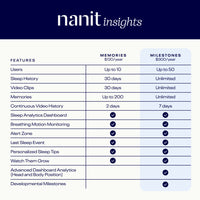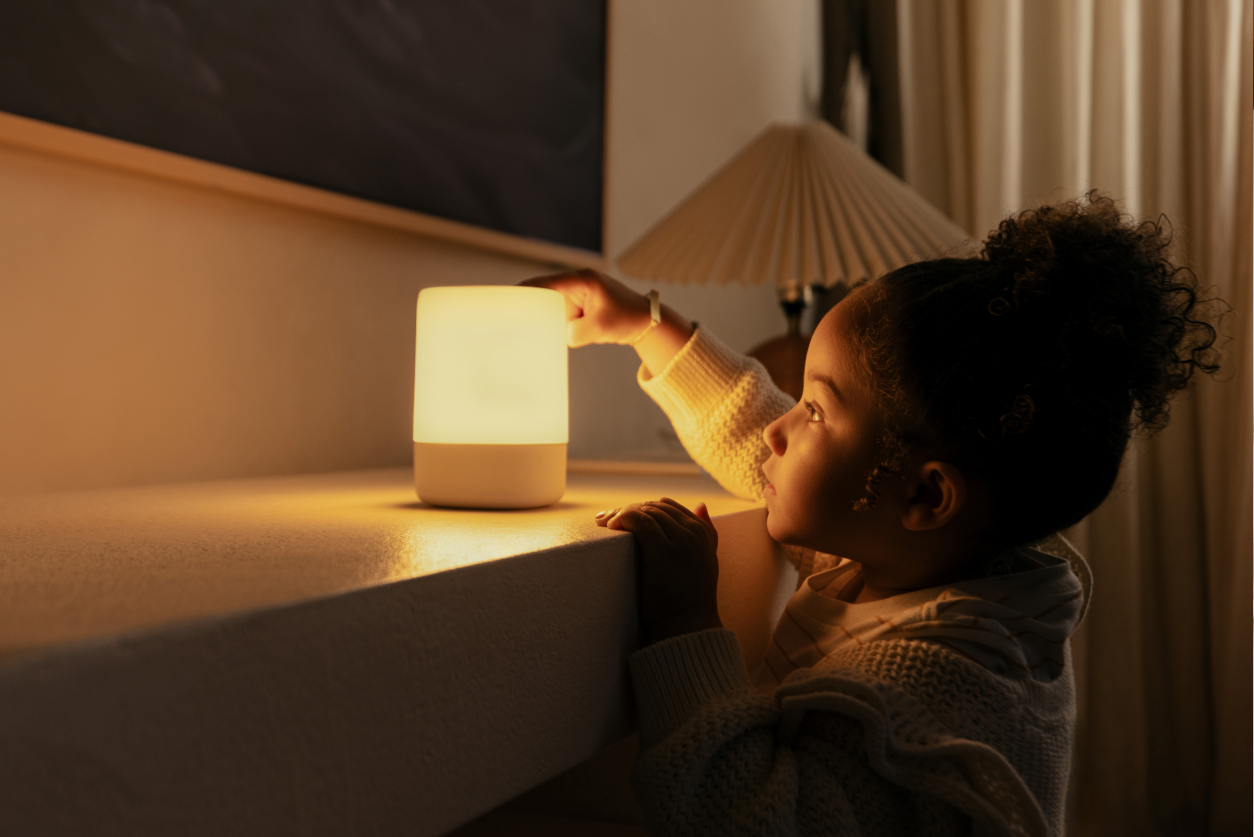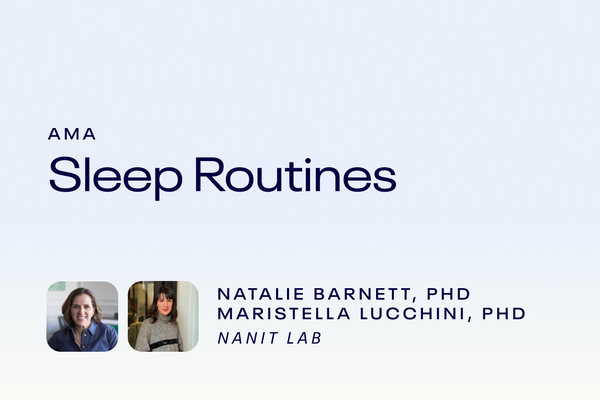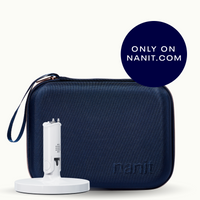You’d think noise would be an automatic enemy to a good night’s sleep, particularly when it comes to infants. And yet, if there’s one noise that sends your baby into sweet dreamland —and helps them stay there—it’s white noise.
Officially defined as ambient noise that incorporates all the frequencies detectable to the human ear, white noise (WN) mimics the “shhh” you might whisper to your child, only at a continual, soothing pace.
It sounds magical. But how loud should white noise be for a baby? Read on.
Understanding white noise and its benefits for babies
While every parent likely has a clever trick or two to get their baby to fall asleep, white noise has become the universal go-to soothing solution for babies. Why do babies like white noise?
Theories suggest that white noise:
- Provides a comforting “auditory environment.” Wombs are a hub of sound. Approximately 18 weeks into gestation, babies begin picking up on noises, from their mother’s heartbeat to voices. White noise supplies a similar, comforting sound, and may save your little one from feeling anxious and isolated (which is a recipe for sleeplessness).
- Masks jarring or surprising noises. Environmental noise such as lawnmowers, rowdy older siblings, and the drone of the TV can all startle a slumbering child out of sleep—or prevent them from falling asleep in the first place. White noise offers a serene buffer between life’s inevitable background noises and your baby’s ears.
Research confirms the perks of these static sounds. An older, groundbreaking study found that 80% of newborn babies fell asleep within five minutes of listening to white noise. A far more recent Nanit Lab study on the power of white noise determined that babies who slept with white noise present slept an average of two hours more per night.
Optimal white noise volume for baby’s sleep
Benefits aside, white noise can go from peace-inducing to fuss-inducing if the volume is too high. So how loud is too loud for a baby?
According to pediatricians, white noise levels should not exceed 50 decibels—a number determined in the wake of a study performed by the American Academy of Pediatrics (APA). To further protect your baby’s delicate ears, place the white noise machine at least 7 feet from their sleeping space.
Signs that white noise is too loud for your baby
White noise can be a powerful tool for ensuring your baby (and, importantly, you) get the sleep you need to thrive, but every child has a different threshold for noise levels. While experts recommend keeping the volume at 50 decibels or lower, some babies may respond better to an even softer level.
It’s also crucial to bear in mind that infants (and children) have smaller ear canals and more sensitive hearing than adults.
Your white noise machine may be too loud for your child if:
- They have trouble falling or staying asleep
- They’re experiencing irritability, restlessness, and agitation
- They have tense muscles
- The noise startles or makes them cry
Above all, you know your child best. If they display any sort of behavior that suggests white noise is more bothersome than beneficial, lower the volume on your infant sleep machine or, move it farther away. You may also explore different types of noises to determine for yourself what noise is best to help your baby sleep.
Choosing the right sound and light machine for your baby
For parents interested in giving white noise a try (or for those who want to update their current machine), search for a quality sound machine that includes volume control and a built-in nightlight. Other helpful features include:
- Customizable light controls
- Audio monitoring
- Control via an app
- Ability to save favorites and automated routines
- Integration with other smart products like your baby monitor or Google Home
- A variety of sounds, such as lullabies, ultra-relaxing nature sounds, and/or wake up sounds
You may also want to look for a portable product with a long-lasting battery to keep your baby calm and content for on-the-go naps or if the power goes out.
Enhance your sleep routine with Nanit
Your baby sleeping soundly is a wonderful thing—for everyone in the household. And few activities are more critical to your child’s growth, development, and happiness than sleep. When used thoughtfully, white noise can be an incredibly effective way to help good sleep happen.
Nanit offers an array of sleep solutions to lull your baby into dreamland and keep them sweetly snoozing.
Our Sound + Light Machine checks all the boxes outlined above while also providing a range of extras, including cry detection, temperature and humidity tracking, and more. Pair it with our Nanit Pro Camera to receive a comprehensive picture of your baby’s sleep at any given time and from nearly any given place.
Need more persuading? Nanit parents score 36 more nights of sleep per year. (That’s like getting a month of extra sleep!)
Key takeaways:
- White noise offers a bevy of benefits. Multiple studies have shown that white noise can ease babies into sleep by replicating the ambient sounds infants grew accustomed to in the womb.
- Volume and placement are key. How loud should a sound machine be for a baby? To shield your little one against potential hearing loss, white noise machines should be set at 50 decibels or lower and placed roughly 7 feet away from your baby’s sleeping space). At this low volume, it’s fine to use a white noise machine all night long.
- Pay attention to your baby’s cues. Startling at the sound of white noise, demonstrating signs of agitation, and showing restlessness can all be signs that your white noise machine may be too loud for your baby’s sensitive ears or they just don’t like it. Opt for a quality sound machine designed to maximize your baby’s sleep and well-being.
Sources:
Iranian Journal of Public Health. White noise and its potential applications in occupational health: a review. https://www.ncbi.nlm.nih.gov/pmc/articles/PMC10135504/
Healthline. The pros and cons of using white noise to put babies to sleep. https://www.healthline.com/health/parenting/white-noise-for-babies
Healthy Children.org. When can my unborn baby hear me? I’d love to be able to read and sing to them. https://www.healthychildren.org/English/tips-tools/ask-the-pediatrician/Pages/I%E2%80%99m-pregnant-and-would-like-to-sing-to-my-unborn-baby.aspx#
Parents. How white noise can help your baby sleep. https://www.parents.com/white-noise-for-baby-how-it-can-help-infants-sleep-8413752
Archives of Disease in Childhood. White noise and sleep induction. https://pubmed.ncbi.nlm.nih.gov/2405784/
Pediatrics. Preventing excessive noise exposure in infants, children, and adolescents. https://publications.aap.org/pediatrics/article/152/5/e2023063753/194472/Preventing-Excessive-Noise-Exposure-in-Infants/
Manchester University. Protecting your child’s hearing. https://mft.nhs.uk/app/uploads/2022/06/Hearing-Protection.pdf
Cleveland Clinic. Sleep in your baby’s first year. https://my.clevelandclinic.org/health/articles/14300-sleep-in-your-babys-first-year








































